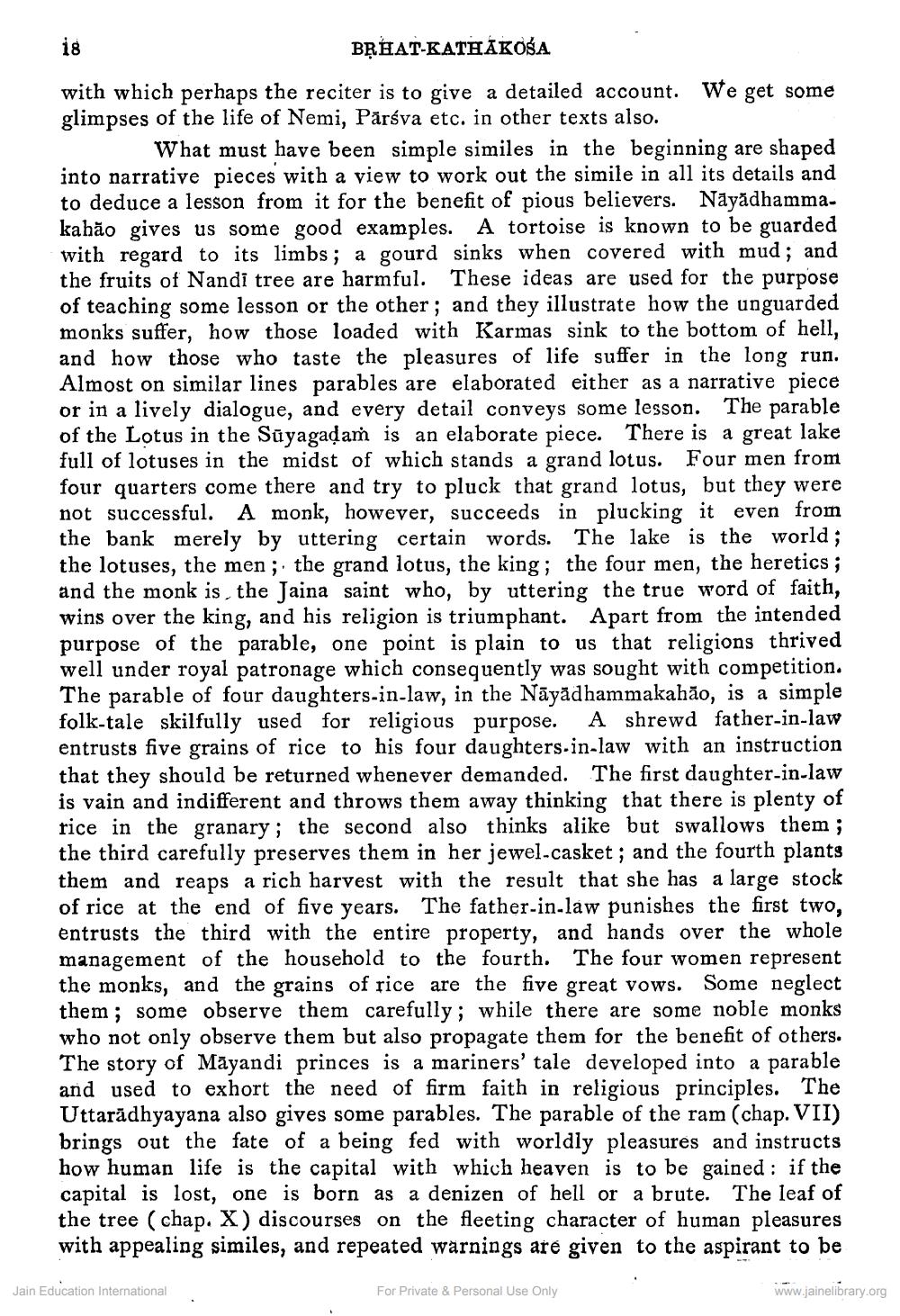________________
18
BṚHAT-KATHÁKOŠA
with which perhaps the reciter is to give a detailed account. glimpses of the life of Nemi, Pärśva etc. in other texts also.
We get some
What must have been simple similes in the beginning are shaped into narrative pieces with a view to work out the simile in all its details and to deduce a lesson from it for the benefit of pious believers. Nāyādhammakahão gives us some good examples. A tortoise is known to be guarded with regard to its limbs; a gourd sinks when covered with mud; and the fruits of Nandi tree are harmful. These ideas are used for the purpose of teaching some lesson or the other; and they illustrate how the unguarded monks suffer, how those loaded with Karmas sink to the bottom of hell, and how those who taste the pleasures of life suffer in the long run. Almost on similar lines parables are elaborated either as a narrative piece or in a lively dialogue, and every detail conveys some lesson. The parable of the Lotus in the Suyagaḍam is an elaborate piece. There is a great lake full of lotuses in the midst of which stands a grand lotus. Four men from four quarters come there and try to pluck that grand lotus, but they were not successful. A monk, however, succeeds in plucking it even from the bank merely by uttering certain words. The lake is the world; the lotuses, the men; the grand lotus, the king; the four men, the heretics; and the monk is, the Jaina saint who, by uttering the true word of faith, wins over the king, and his religion is triumphant. Apart from the intended purpose of the parable, one point is plain to us that religions thrived well under royal patronage which consequently was sought with competition. The parable of four daughters-in-law, in the Nāyādhammakahão, is a simple folk-tale skilfully used for religious purpose. A shrewd father-in-law entrusts five grains of rice to his four daughters-in-law with an instruction that they should be returned whenever demanded. The first daughter-in-law is vain and indifferent and throws them away thinking that there is plenty of rice in the granary; the second also thinks alike but swallows them; the third carefully preserves them in her jewel-casket; and the fourth plants them and reaps a rich harvest with the result that she has a large stock of rice at the end of five years. The father-in-law punishes the first two, entrusts the third with the entire property, and hands over the whole management of the household to the fourth. The four women represent the monks, and the grains of rice are the five great vows. Some neglect them; some observe them carefully; while there are some noble monks who not only observe them but also propagate them for the benefit of others. The story of Mayandi princes is a mariners' tale developed into a parable and used to exhort the need of firm faith in religious principles. The Uttaradhyayana also gives some parables. The parable of the ram (chap. VII) brings out the fate of a being fed with worldly pleasures and instructs how human life is the capital with which heaven is to be gained if the capital is lost, one is born as a denizen of hell or a brute. The leaf of the tree (chap. X) discourses on the fleeting character of human pleasures with appealing similes, and repeated warnings are given to the aspirant to be
www.jainelibrary.org
Jain Education International
For Private & Personal Use Only




